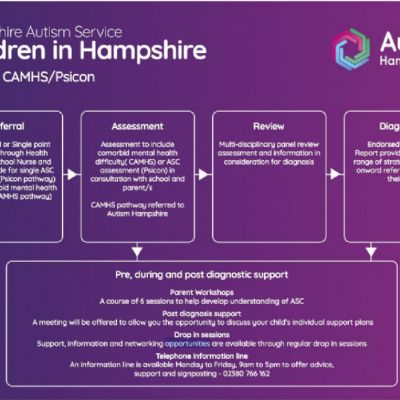Autism spectrum disorder (ASD)
What is autism?
Autism can be known as ASD (Autism spectrum disorder) or ASC (Autism spectrum condition) depending on where you are looking.
Autism is a spectrum condition and affects people in different ways. Like all people, autistic people have their own strengths and weaknesses. Below is a list of difficulties autistic people may share, including the two key difficulties required for a diagnosis.
- Social communication and Social interaction
- Repetitive and restrictive behaviour
- Over-or-under sensitivity to light, sound, taste or touch
- Highly focused interests or hobbies
- Extreme anxiety
- Meltdowns and shutdowns
These differences that people with ASC may experience can make everyday life overwhelming.
- Often people can feel worried and stressed by everyday activities such as going to school, meeting people and trying new things.
- Difficulties with social communication and interaction and the differences in their interests, strengths and talents can make them feel left out and misunderstood by other people, which can lead to problems with low mood and low self- esteem
What is Autism?
More information and support
The National Autistic Society - https://www.autism.org.uk/advice-and-guidance/what-is-autism
Autism Hampshire - https://autismhampshire.org.uk
CAMHs - https://hampshirecamhs.nhs.uk/issue/autistic-spectrum-condition-2/
CAMHS parents page - https://hampshirecamhs.nhs.uk/help/parents-carers/autistic-spectrum-condition/
Autism APPs - https://www.autismapps.org.au (currently under review but linked website has lots of information on it)
Barnados Specialist Parenting Support - Hampshire Specialist Parenting Support Service | Barnardo’s
Ask About Autism – BRAAIN/HPCN - https://www.braain.co.uk/ask-about-autism.
Autism slides from CAMHs
Hampshire CAMHS - How to support a young person who may have Autism
Route to Diagnosis

